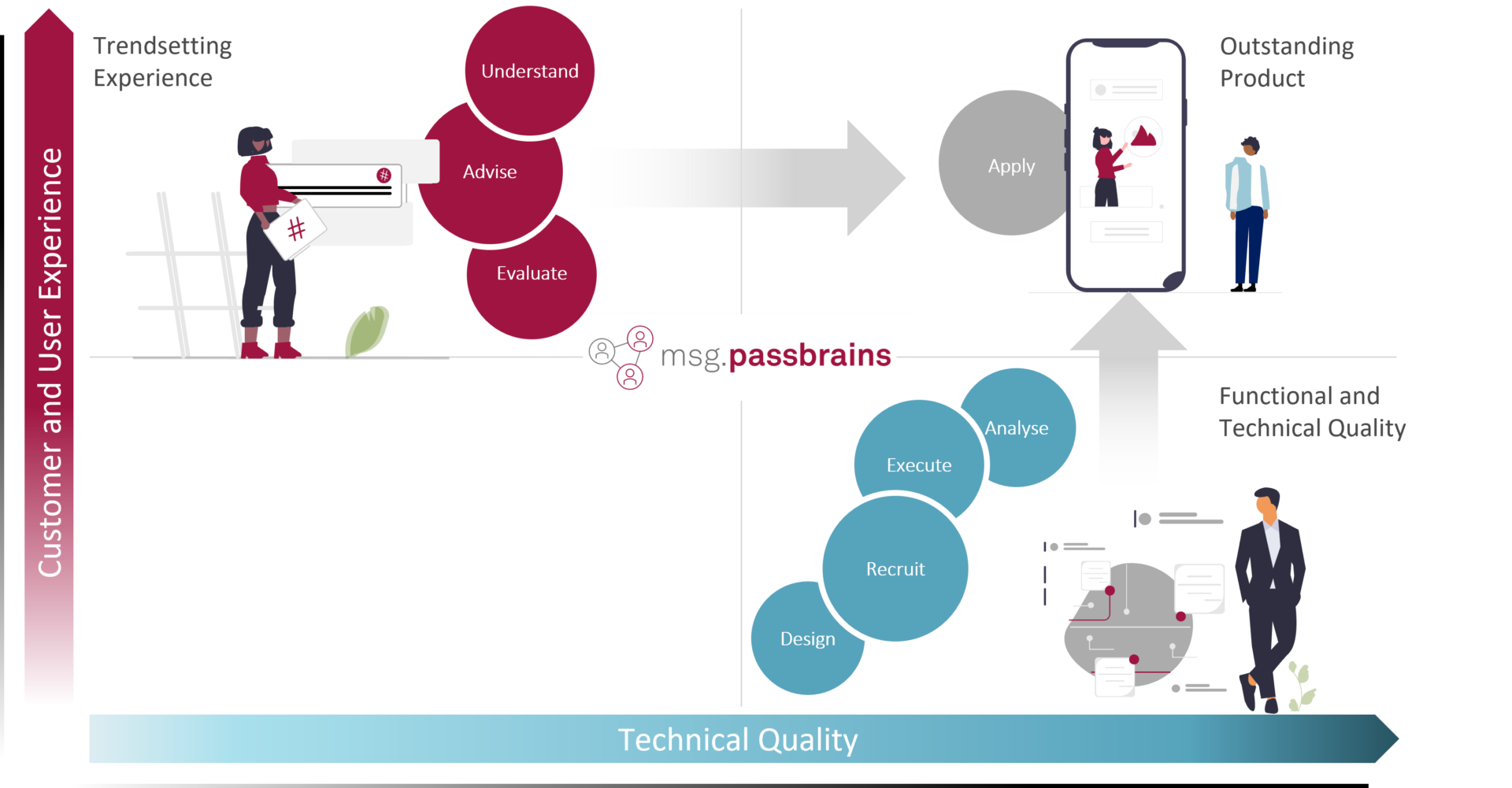
Thanks to MSG for providing us with this blog post.
Users are looking for products that inspire – or at least don’t bother them
Future generations – all of them digital natives – will no longer enter their business relationships as traditional customers. The changed demands and the constant transformation through digitalization are turning customers into users. But where no human interaction can create trust, dispel doubts, and answer questions, the product alone is in the spotlight and must have the ability to convince in a very short time and with a reduced attention span.
Attractive, easy to use and – best of all – with a higher range of functions.
Constantly available and nearly unlimited offerings are no longer disruptive but common standards. This applies to products, services, and public offerings at the same time. So, whatever your offer is, you must make sure, the users find it attractive, easy to use and with a suitable range of functions.
The users – not a homogeneous mass
Another challenge is to meet the different target groups and to create a digital infrastructure that covers their different needs equally. Those of Generation Y and Z, which have the purchase power and demand of the future expect modern forms of interaction, purchasing products and services fully digital. The future “everything is now” generation, which is no longer tied to long-term contracts and is used to getting whatever they are looking for on demand.
The competition among web-offerings, which compete without ties and with the promise of a “change of supplier in minutes”, meets this need. The time span to inspire or disturb new users is accordingly very short. Not at least because the tolerance for errors also decreases with the rising use of digital products. By now, most users have gained so much experience with apps and online products that they have a clear expectation of functions and usability. If these expectations are disappointing, they simply download the next app. And even if this is sometimes tied to opening an account, today this can be done quickly enough and with reasonable efforts.
The subjective experience counts
As good as product design and functionality may be, the product experience is and remains subjective. Every product will always create a subjective use case for the user, and this must work to store a positive experience.
A subjective use case could be that a user carries out his transactions exclusively while commuting on a mobile device and expects for instance a banking app to be compatible with his mobile device. The app should be so intuitive to use that external distractions do not disrupt the user flow and ideally the data flow should adequately handle the switch from 3G/4G mobile networks to WLAN networks. If all this fits, the experience is consistently positive.
This in turn not only brings the advantage that the individual user is satisfied, but providers also benefit from the fact that an experience is always communicated to others.
Position yourself on the market through assured quality
By assessing the product quality, you may influence your positioning on the market towards an outstanding product experience. This inherits the following to be ensured:
- The smooth functionality of the product on the most popular devices in the market.
- The provision of the appropriate range of functions with the right characteristics for the target group.
- Covering as many subjective use cases as possible to avoid negative surprises after go-live.
While the first point can still be tested internally and in the laboratory, for example with emulated devices, as part of a verification, the other two points can only be tested as part of a validation.
Crowdtesting offers solutions
Crowdtesting is the validation of digital products involving your target group – remotely via the internet. Leaving this rather rigid definition behind, this method offers good tools to meet the three challenges of digital assurance. It allows positioning towards the upper right quadrant of digital excellence and thus can serve to stand out from the masses with an outstanding product.

Crowdtesting helps you to cover subjective use cases and perceptions in any phase of the life cycle. You get a direct insight into whether your target group feels heard and can adapt at any time. In addition, with the variety off devices and mindsets added to your testing process you will be enabled to find functional and technical issues which wouldn’t be uncovered in the lab. And if there are no functional problems, that’s worth a pat on the back for your development and builds confidence in your product.
Feedback will always be a part of this testing process and even if the insights and “bugs” gathered in this process may not be fixed, they can be incorporated into the further development of the product. In the meantime, the results help customer support to prepare for possible enquiries and to create meaningful FAQ lists.
Conclusion – Crowdtesting is useful in any phase of a products lifecycle
It gives a good insight into the technical and functional stability of your product and provides the opportunity to understand the (future) users from the beginning and develop with a focus on their added value. You don’t have to wait for feedback from customers who may be disappointed once, not return to your site at all and not using your app a second time.
Author

Johannes Widmann
Johannes Widmann has been working in the field of software quality and digital assurance for over 22 years. He is a dedicated desciple of crowdtesting since 2011 and has built up passbrains, one of the leading service providers for crowd-sourced quality assurance. Since January 2021 passbrains is part of the msg group.
MSG is an EXPO Exhibitor at EuroSTAR 2023, join us in Antwerp